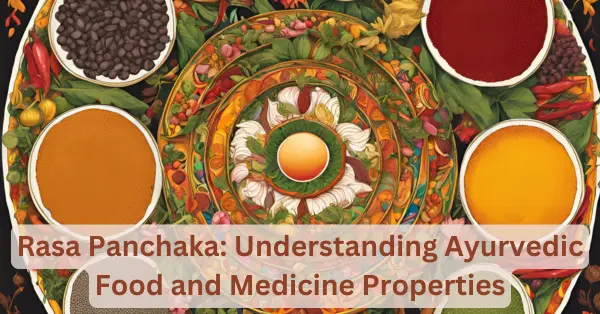In this article, we will discuss Kapha dosha comprehensively. All the points about it will be covered from Ayurveda’s point of view.
What is Kapha Dosha?
Ayurveda states that Kapha dosha is one of the three (vata, kapha, and pitta dosha) biological energy principles that govern lubrication, stability, and support in the body.
It is made up of water and earth elements. It means that the qualities reflective of earth and water elements. 
Kapha dosha in detail
Doshas are the energy principles that control all the bodily parts and the mind.
At the unity of sperm and ovum cells, two of the five basic elements (earth, air, water, fire, and space) combine to form the three doshas or biological energy principles i.e. vata kapha and pitta dosha.
Water and earth elements join together to form the Kapha Dosha i.e. it has all the qualities of water and earth elements. Kapha is of 5 types.
Kapha dosha types
There are five types or subtypes of Kapha dosha in the body:
1. Kledaka Kapha
2. Avalambaka Kapha
3. Tarpak Kapha
4. Shleshka Kapha
5. Bodhaka Kapha

Kapha dosha types in detail
1. Kledaka Kapha
It is correlated to “gastric mucin” in English. Pathological (due to disorders or disease) increase of Kledaka Kapha can lead to digestive disorders.
Functions of Kledaka Kapha-
It moistens the food mass (so it can easily be digested by Pachaka Pitta) and helps in digestion.
Imbalance leads to–
A. If Kledaka Kapha is increased, it can disturb the stomach acid and can cause delayed digestion.
B. If Kledaka Kapha is decreased, the stomach will produce too much acid leading to hyperacidity, acidic taste in the mouth, and abdominal discomfort.
How to Balance Kledaka Kapha–
1. To balance one must drink plenty of water every day.
2. You should include herbs; Ginger and Pepper in your food often.
2. Avalambaka Kapha
Avalambaka Kapha is located in the lungs but circulates in the body.
Functions of Avalambaka Kapha–
It nourishes all organs and tissues of the body.
Imbalance leads to–
Lungs and heart problems
How to Balance Avalambaka Kapha–
General Kapha pacifying herbs are suggested to balance this subtype of Kapha.
3. Tarpaka Kapha
Tarpaka kapha is correlated with the cerebrospinal fluid in English.
Function of Tarpaka Kapha-
It nourishes sense organs, brain cells, and the entire nervous system.
It also helps in the cultivation of peace and contentment.
Imbalance leads to–
Slow learning, weak memory, anger, greed, and lack of clarity in the mind.
How to Balance Tarpaka Kapha-
1. Meditation is the best way to balance Tarpaka Kapha
2. One can also consume herbs like Brahmi, Ashwagandha, and Saraswata after consulting an Ayurveda doctor.
4. Shleshaka Kapha
Shleshaka Kapha is correlated to Synovial fluid in English.
Functions of Shleshaka Kapha–
It is responsible for all the lubrication in the body, especially the joints
Imbalance leads to–
Joint disorders and diseases.
A. If Shleshaka Kapha is increased then there will be swelling of joints
B. If Shleshaka Kapha is decreased then there will be dry joints.
How to balance Shelshaka Kapha-
1. Local application of the heat and steam bath can pacify the Shelshaka Kapha.
2. Warm oil massage with a medicated herb is also recommended.
5. Bodhaka Kapha
Bodhaka Kapha is located in the tongue.
Functions of Bodhaka Kapha-
It gives the perception of taste.
Imbalance leads to–
Impaired digestion, saliva regulation is disrupted which slows down the digestion.
How to balance –
One can take the herb Liquorice to balance the Bodhaka Kapha.
Also, black pepper, long pepper, and ginger decrease the Bodhaka Kapha.
Vata, Pitta, and Kapha types or subtypes work together
All types or subtypes of doshas work in sync to support a healthy body.
For example, Pachaka Pitta works in sync with Samana vata and Kledaka Kapha to enable proper digestion.
Similarly, Sadhaka Pitta works with Tarpaka Kapha and Prana Vata to enable a proper thought process, to promote intelligence, and memory process.
Functions of Kapha Dosha
The main functions of Kapha dosha in the body are as follows-
- It is responsible for the lubrication of tissues.
- Also, responsible for the strength of the body.
- It gives stability and compactness to joints.
- It is also responsible for stable thinking.
Kapha Body type people

- People dominated with kapha dosha put on weight quickly
- They are often higher weight person
- They have a Smooth skin
- Strong hair
- Deep pleasant voice
- Sound sleep
- Poor and sluggish digestion
- They feel less thirsty
- They have a strong Immune system
- But they are more prone to colds, respiratory ailments, and infections.
- They are intolerant to cold climates.
Kapha dosha Personality traits
- Kapha-dominated people are calm and loving.
- They are patient and supportive.
- Slow in learning. They are usually slow but steady.
- Possess a long-term memory
- They are team players
- You can also find them loyal and tolerant
- Lazy is a common trait of Kapha dosha’s personality.
Attributes or Qualities of Kapha
It has similar qualities to the water and earth elements.
- Cold
- Moist
- Heavy
- Dull
- Smooth
- Static
- Dense
- Oily
- Soft
- Associated tastes are sweet, sour, and salty
Location of Kapha in the body
It is mainly located in the Chest, Throat, Lungs, Fatty tissues, Ligaments, and Tendons.
Factors Aggravating Kapha
- Lack of exercise and physical activity
- Oily food
- Sweet and Fatty foods
- Fish, meat, dairy products
- High-calorie foods
- Excessive liquid foods
- Excess sleep
Natural factors Aggravating Kapha
- The early part of the day
- Immediately after the consumption of food
- Spring season
- Childhood
Kapha dosha Imbalance symptoms
Following are the signs of imbalance-
- Slow bowel movement
- Depressed metabolism
- Excess mucous
- Cold, cough, runny nose
- Lethargy
- Heaviness in the body
- Excess body weight
- Loss of strength
- Thick white tongue coat
- Excess urination
- Cold sweat
- Oily skin and hair
- Difficulty rising in the morning
- Emotional over-eating
Kapha Dosha disease
The list of all 28 Kapha diseases or disorders according to Ayurveda is-
- Obesity
- Loss of Appetite
- Decreased/unbalanced digestive fire
- Urticaria
- Pallor
- The whiteness of eyes, urine, and stool
- Goiter
- Drowsiness
- Anorexia
- Excessive sleep
- Lethargy
- Heaviness (always)
- Faintheartedness/Timidity
- Indigestion
- Expectoration of mucus
- Excessive excretion
- Hardened blood vessels
- Sweet taste in the mouth (always)
- Throat phlegm
- Vomiting
- Chronic rhinitis
- Bronchitis
- Salivation
- Itching
- Horripilation
- Ineffectiveness of conscience
- Sensations in the ears, eyes, nose, gums, lips, throat, tongue, palate and lips
- Cardiac disorders
Conclusion
Kapha dosha is one of the three life energies behind all our bodily functions. A person should strive to balance these life energies or doshas to have an optimum state of health.
Reference
Kapha in modern perspective
Dosha brain-types
Frequently Asked Questions FAQ Vata Dosha
Yes, kapha or kapha dosha are the same. In short, you can say kapha instead of kapha dosha every time.
No, Kapha is called dosha in both a balanced and unbalanced state.
Unbalanced Kapha is called “vikrutha kapha dosha”. Balanced Kapha is called “prakrutha kapha dosha”.
Dosha is a Sanskrit word that means “fault”, or “that causes problems”.





